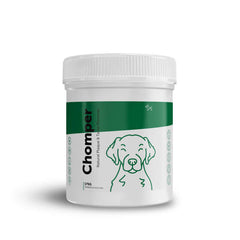Your basket is empty

10 Things You Need to Know About Canine Oral Health
March 20, 2023 6 min read
Good oral care is important in dogs to keep their teeth and mouths clean. Poor dental hygiene can be harmful in the long run as it can lead to an array of dental problems like tartar buildup, periodontal disease, tooth abscesses, and even tooth loss.
That’s why we’ve compiled a list of ten things you need to know about canine oral health, including some informative and fun facts.
***
1. Adult Dogs Have 42 Teeth
Once dogs have reached around six months of age, all of their 42 permanent teeth will have erupted. Milk teeth, also known as deciduous teeth, begin developing in puppies at approximately three weeks old.
By six weeks of age, most puppies will have all of their baby teeth. These teeth gradually fall out once puppies are about 12 weeks old.
***
2. Dogs Have 4 Types of Teeth
Adult dogs have four types of teeth: canines, incisors, molars, and premolars. Interestingly, puppies do not develop baby molars - they have to wait until their permanent molars set in!

Canines
The canines (also called “fangs”) are pointy and located on the top and bottom of each side of your dog’s mouth. These teeth are used to grab onto or puncture things, which is why dogs are pros at destroying toys and your personal belongings.
Incisors
Your dog has 12 incisors (six on the bottom and six on the top) in the front of their mouth. These tiny teeth excel at ripping meat from a bone and keeping your dog’s coat clean.
Molars
There are six molars at the bottom back of your dog’s mouth and four on the top. These teeth are durable, sturdy, and flat, which makes them great for chewing and crushing.
Premolars
Last but not least are the premolars. These are positioned behind the canines - eight on the bottom and eight on the top. Dogs use their premolars when they chomp on something with the side of their mouth.
***
3. Dog Saliva Has Better Buffering Capabilities Than Human Saliva
Canine saliva has higher buffering capabilities than human saliva, in addition to higher potassium, calcium, and sodium levels. It contains antibacterial properties, which can help heal cuts and fight off infections.
A 2018 study showed that wounds were repaired much faster when they were licked by dogs as opposed to those that were left alone. However, not all abrasions heal quicker from dog saliva. The bacteria in a dog’s saliva can sometimes slow down the healing process and cause infections.
Dog saliva also has a pH of around 7.5 to 8.0, making it slightly alkaline and better at preventing cavities as a result. Human saliva, on the other hand, has a pH of approximately 6.5 to 7.0, so it is mildly acidic to neutral.
***
4. Poor Oral Care Can Lead to Various Dental Issues
Cleaning your dog’s teeth is an important part of their care, otherwise, it can lead to an array of dental issues, including plaque/tartar buildup, tooth abscesses, and gingivitis.
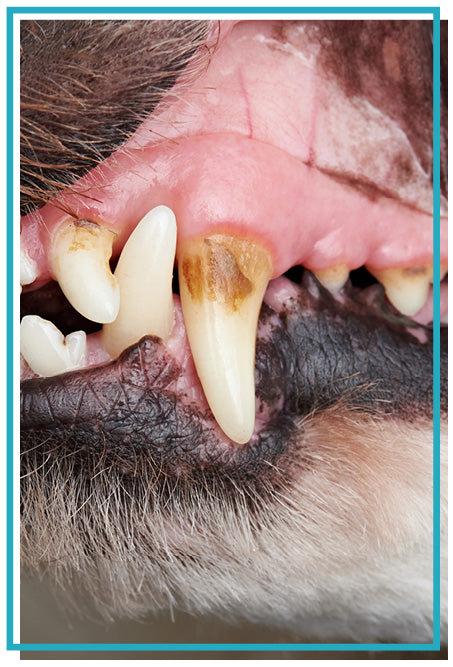
Plaque/Tartar Buildup
Plaque is a sticky film that coats your dog’s teeth and is caused by food, bacteria, and saliva. If it is not removed within 48 hours, it hardens and turns into a brown substance called tartar or calculus.
Left untreated, tartar buildup can lead to pain, inflammation, receding gums, and even tooth loss. Calculus can only be removed by veterinarians with experience in dog dentistry, so it’s important to prevent it from occurring in the first place.
How to remove plaque/tartar from dog's teeth?
This can be achieved by brushing your dog’s teeth with a dog-safe toothpaste twice a day, using hard chews or dental sticks, and dog supplements like CHOMPER that contain kelp and seaweed.
Our tartar and plaque remover for dogs CHOMPER is made with a 100% natural kelp and seaweed mix that works to reduce plaque and tartar, as well as keep your pooch’s mouth cleaner.
Before you add dog supplements to your pet’s diet, speak to your vet to make sure it’s the right step forward.
Tooth Abscess
A tooth abscess in dogs occurs when bacteria enters a fractured or diseased tooth, which leads to an infection around the root of the tooth. Symptoms include bad breath, poor appetite, swelling, and red gums.
Your pet may also refuse to eat on the side of the affected tooth or pull away if touched around the face.
The condition is very painful and needs immediate veterinary attention.
Gingivitis
Gingivitis is an early stage of periodontal disease and results in inflammation of the gums, which is sometimes accompanied by bleeding. It is caused by bacteria found in plaque, so it tends to occur if your dog has poor oral hygiene.
Gingivitis can be treated by frequent tooth brushing and improving oral health. However, if gingivitis is left to advance to periodontitis, it will require the help of a veterinarian who specialises in dog dentistry.
***
5. Dental Disease Should Never Be Ignored
More than 80% of dogs over the age of three suffer from dental disease, and it is almost always associated with poor oral hygiene. Gum disease, also known as periodontal disease, is caused by bacteria in your dog’s mouth.
Over time, it damages your pet’s gums, jawbone, and other structures of their teeth. Unfortunately, the signs of gum disease are not visible until it has moved to an advanced stage.
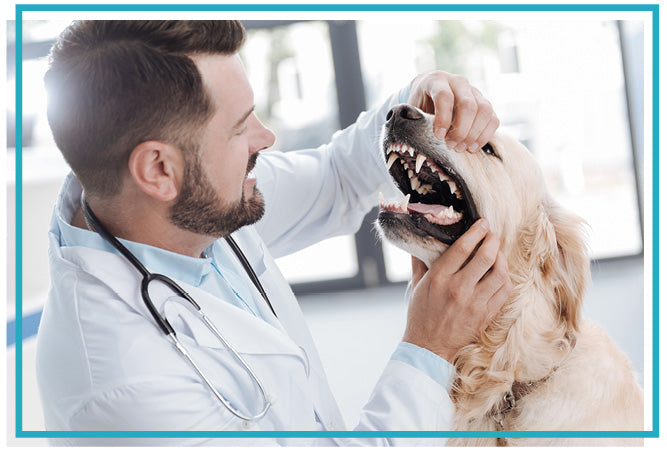
Later stages tend to cause symptoms like inflamed or puffy gums, bad breath, gum recession, bleeding, tooth root exposure, and loose or missing teeth.
Minor cases can be treated with regular tooth brushing, but advanced gum disease will need to be looked at by a vet. Professional dental cleaning is usually necessary, which includes scaling/polishing of the teeth and full mouth x-rays.
That’s why it’s so important to clean your dog’s teeth regularly and go to regular check-ups with your vet.
***
6. Certain Nutrients Can Help Fight Gum Disease
Although frequent tooth brushing is key to fighting off gum disease, there are certain nutrients that also prevent this condition. These include:
- Zinc
- Folic acid
- Antioxidants
- Probiotics
- Vitamin A
- Fish oil
- Calcium
- Bromelain and papain
- Coenzyme Q
Using a good-quality dog food that contains these nutrients or canine supplements like OMEGA and TUMMY can help keep gum disease at bay, as well as improve your dog’s overall health.
***
7. A Good Diet Can Help Prevent Dental Issues
Providing your dog with a healthy, well-balanced diet can help prevent dental issues and keep your dog in great shape. Dog food that is high in protein and low in carbohydrates can steer off gum disease and promote good health.
It’s thought that canines fed on raw-food diets are less likely to develop gingivitis and periodontal disease, but bear in mind that this type of diet does require a lot of research to get right.
***
8. Bad Breath Can Be a Sign of Diabetes or Heart and Kidney Disease
While bad breath is commonly associated with tartar buildup and other dental issues, it can also be a sign of diabetes and liver or kidney disease in dogs. Canines with diabetes will have a sweet or fruit scent to their breath and symptoms such as weight loss, increased thirst, and excessive urination.
Dogs with liver disease will often have extremely foul breath that smells sweet and musty, as well as other symptoms like poor appetite, vomiting, and jaundice.
Lastly, dogs with kidney disease will also have pungent-smelling breath, but it will have a similar odour to ammonia or bleach. The smell may be more akin to faeces if renal failure is present.
If you notice any of the above symptoms in your pet, book an appointment with your vet immediately, as it could be more serious than gum disease.
***
9. Pet Insurance Doesn’t Usually Cover Dental Care
Unfortunately, most pet insurance plans don’t cover dental care unless you pay extra. If your dog ends up needing professional dental work, it can get pretty expensive, especially if mouth x-rays are involved.
Keeping on top of your dog’s oral hygiene is more important than ever as it will keep your dog’s mouth healthy and be cheaper for you in the long run.
***
10. Ways to Prevent and Control Plague in Dogs
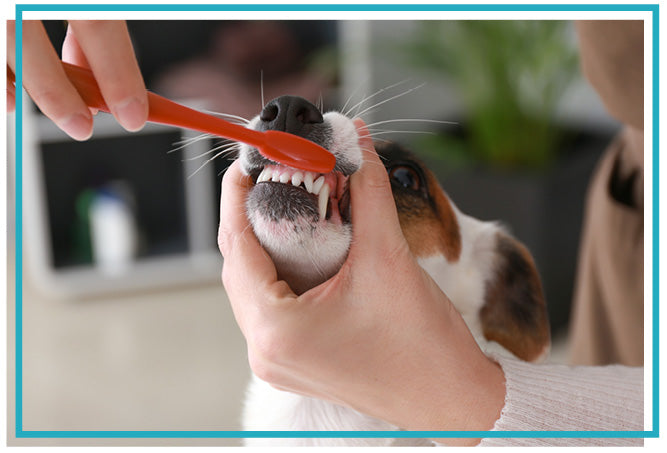
Regular tooth brushing (at least twice a day) is the best way to prevent and control plaque, but a few other things can help. Hard chew toys, dental chews and treats, plus introducing a plaque remover for dogs supplement and regular vet visits, are key to maintaining good oral hygiene in dogs.
Gnawing on tough chews and toys will help scrape away plaque and keep tartar at bay by also stimulating your dog. Frequent vet check-ups will highlight any dental issues before they can progress.
***
Final Thoughts
Poor oral hygiene in dogs can eventually become something far more serious if left untreated, so you should always keep on top of your dog’s dental care.
Regular teething brushing is a must, but other factors like a good diet and dog supplements such as CHOMPER, our plaque remover for dogs, can greatly improve your dog’s dental health and overall well-being. A healthy mouth is a healthy dog!
If your pet has dental disease or displays abnormal symptoms, don’t hesitate to get them checked out by a vet.
If you have questions about our tartar & plaque remover for dogs, check out our FAQ section.
Also in Pet Advice
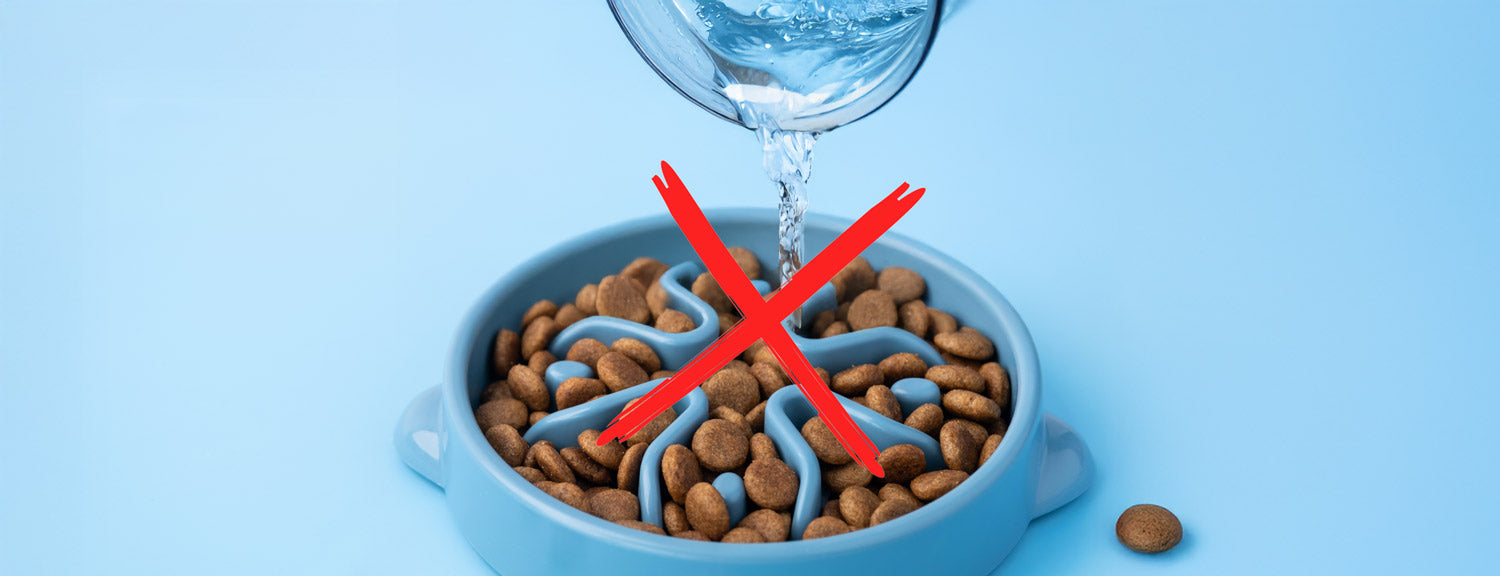
Should You Add Water to Your Dog’s Kibble? Here’s What the Science Says
August 14, 2025 7 min read
Should you add water to your dog’s kibble? Discover the science-backed pros, cons, and better alternatives like bone broth and fresh food to improve hydration, digestion, and overall canine health...
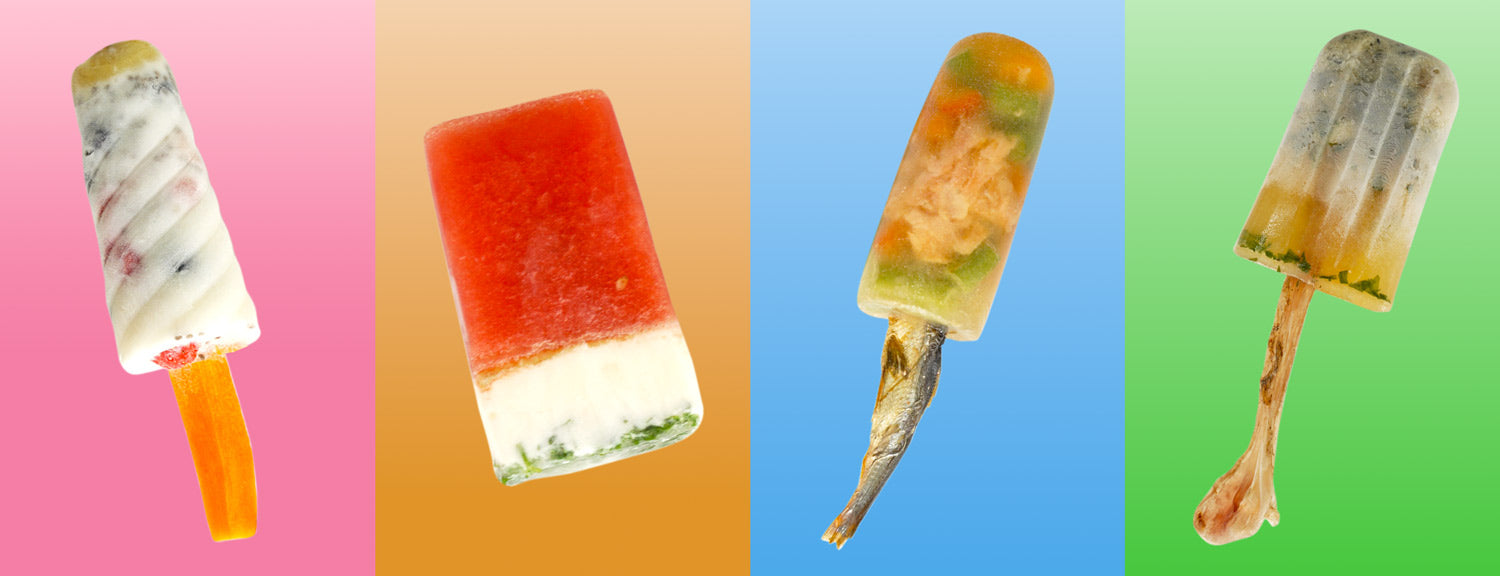
DIY Frozen Dog Treats Your Pup Will Love
June 27, 2025 4 min read
Summer heat can be dangerous for dogs, making hydration more important than ever. Learn how to spot signs of dehydration, boost your pup’s water intake, and create fun, frozen recipes to keep them happy and healthy all season long.
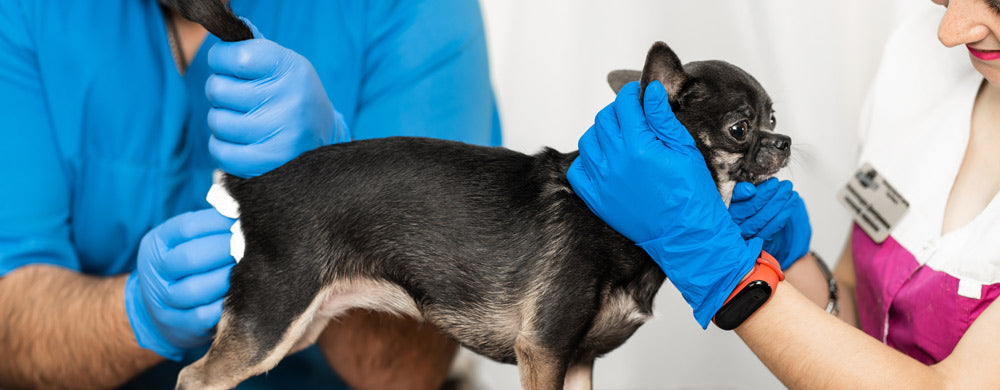
Why Is My Dog Scooting? Common Causes and How Diet Can Help
May 09, 2025 4 min read
If your dog is scooting or smells fishy, it could be due to blocked or irritated anal glands. Learn what causes blocked anal glands, which dogs are most at risk, and how simple dietary changes—like adding fibre and anti-inflammatory nutrients—can help prevent recurring problems.
Search our shop
In this article

